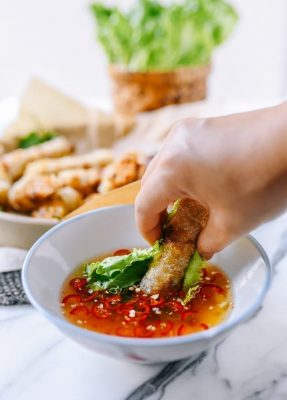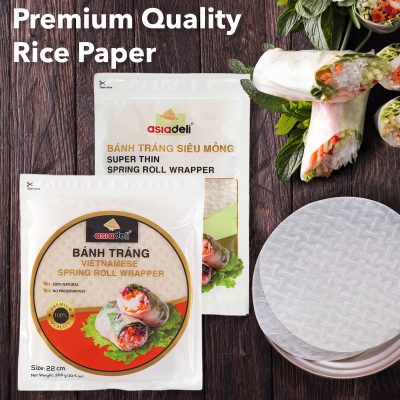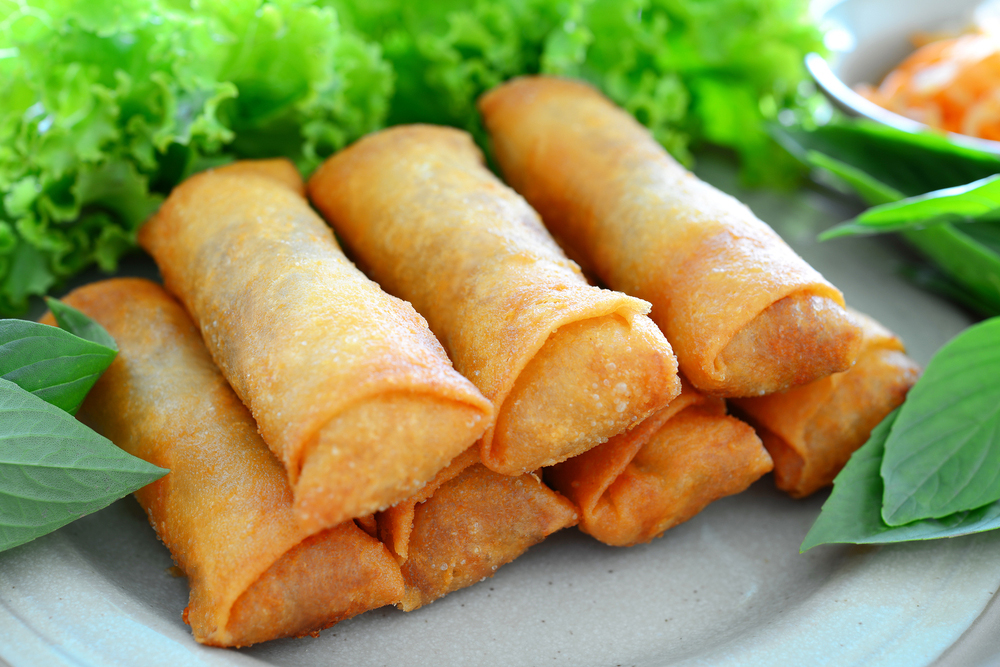No products in the cart.
Food News
Vietnamese Fried Rice Paper Rolls recipe
Vietnamese rice paper roll, or cha gio, are a yummy as well as a preferred appetizer. If you eat in restaurants at Vietnamese dining establishments, you’ve most likely tried these tasty tidbits. Currently, you can make them in your home!
Table of Contents
WHAT IS CHA GIO?

Cha Gio is springtime rolls made by wrapping completing clear rice paper wrappers (vietnamese rice paper roll) and afterward frying them. The filling generally contains ground pork, vegetables, wood ear mushrooms, and also glass noodles. They’re typically offered wrapped with lettuce and also natural herbs, with nuoc cham as a dipping sauce.
We recommend mint, Thai basil, and also cilantro, but feel free to experiment. Enjoying them by doing this truly offers a great comparison between the salty, fried cha gio. And also the rejuvenating, crunchy herbs and lettuce.
The salted, wonderful, and also appetizing nuoc cham establishes the whole point off!
Another method to offer cha gio is to cut everyone right into bite-sized chunks as well as placed them into a Vietnamese noodle salad with nuoc cham as clothing. It’s one of my preferred summer dishes.
Vietnamese rice paper roll VS. FRESH RICE PAPER ROLLS

Cha Gio is Vietnamese fried spring rolls. You may likewise be familiar with goi cuon, which is wrapped in fresh uncooked rice paper. With room temperature level components like prepared shrimp and also natural herbs.
Goi Cuon is additionally referred to commonly as “summertime rolls,”. So if you would rather have those, check out our Vietnamese Shrimp Summer Rolls recipe.
Nevertheless, it’s important to keep in mind that the wrappers are the same for both sorts of rolls! Some individuals use Chinese springtime roll wrappers to make their cha go, we’re using traditional Vietnamese dried rice paper wrappers (bánh tráng).
Vietnamese rice paper roll is mainly made with rice flour, however, some brands likewise include tapioca starch. They are pretty easy to deal with. You do not require any type of extra cornstarch or egg to seal them!
CHA GIO (VIETNAMESE FRIED SPRING ROLLS): RECIPE DIRECTIONS
MAKE THE FILLING:
Soak the dried mung bean noodles in warm water (immerse them totally) for 30 minutes. Drain pipes completely, and cut into 1/4- inch pieces.
In a large bowl, incorporate the noodles, ground pork, grated carrot, cut wood ear mushrooms, shallots, garlic, ginger, egg white, fish sauce, vegetable oil, salt, white pepper, and 1 teaspoon sugar.
Mix until every little thing is consistently combined.
Wrap the spring rolls:
In a big, shallow dish or deep plate, liquify the continuing to be 2 teaspoons sugar in 1 mug of warm water. When frying, Sugar is optional but does aid the springtime rolls to brownish.
To wrap each roll, put a rice paper wrapper right into the sugar water for regarding 5-10 seconds, immersing it entirely. Remove it from the water. It will still be quite firm, however, it will certainly soften promptly!
Place concerning 40g of filling out a log shape on one side of the wrapper.
Begin securely folding the wrapper over the filling (no air bubbles!), as well as roll the spring roll forward 1 complete transformation.
Lightly weigh down on each end of the filling up to squash the rice paper as well as push the loading together to get rid of any air bubbles.
Fold one side of the wrapper towards the middle of the springtime roll. Repeat with the opposite.
Roll the spring roll forward while tucking in the front to avoid air pockets. The rice paper wrapper will certainly adhere to itself. It doesn’t call for anything extra to seal.
After wrapping one spring roll, you can test-fry it to check for your personal flavoring preferences. You can likewise fry a tiny meatball filling up.
Location the rolls on a plate or sheet frying pan lined with a clean, completely dry kitchen towel or parchment paper.
As you’re folding, make certain there’s no air in between the filling and the wrapper.
Utilize just adequate water to wet the rice paper, as water will swiftly soak up right into it and soften it.
Job promptly, since the rice paper will come to be sticky and tougher to deal with once we rehydrated it.
For even more information on wrapping various types of springtime rolls, take a look at our How to Wrap Spring Rolls article!
CHILL
Once covered, move the spring rolls to the refrigerator and cool for a minimum of 1 hr, so they can dry and also tighten. This action helps minimize the wrapper gurgling when frying (though bubbling is normal).
Take them out of the fridge 15 mins before frying.
DOUBLE-FRY THE SPRING ROLLS:
Heat about 3 cups of canola or vegetable oil in a tool pot to 335 ° F/170 ° C( the oil level need to be a little over midway up the sides). Fry the springtime rolls in small batches– about three at once. Ensure they do not touch after they are placed in the oil as the skins will certainly be sticky until a crust kinds. Prepare each batch for 5 to 6 mins, or until light gold brownish. (Frying them in small sets stops them from adhering to each other.).
Utilize a metal slotted spoon to pull them out of the oil. Drain on a rack, as well as proceed to fry. Preserve the proper oil temperature level by periodically readjusting your warm.
When prepared to serve, refry the spring rolls (yes, they need to be fried twice) at 350 ° F/175 ° C for 1 1/2 to 2 mins to make them crunchy and also nice. Double-frying is very important! Serve with fresh lettuce, cilantro, Thai mint, basil, and nuoc cham for dipping.
TIPS & NOTES:.
Note: The recipe makes 20 springtime rolls, 2 springtime rolls per offering. You’ll have about 800g of loading complete, so each of your 20 springtime rolls ought to have around 40g of filling.


